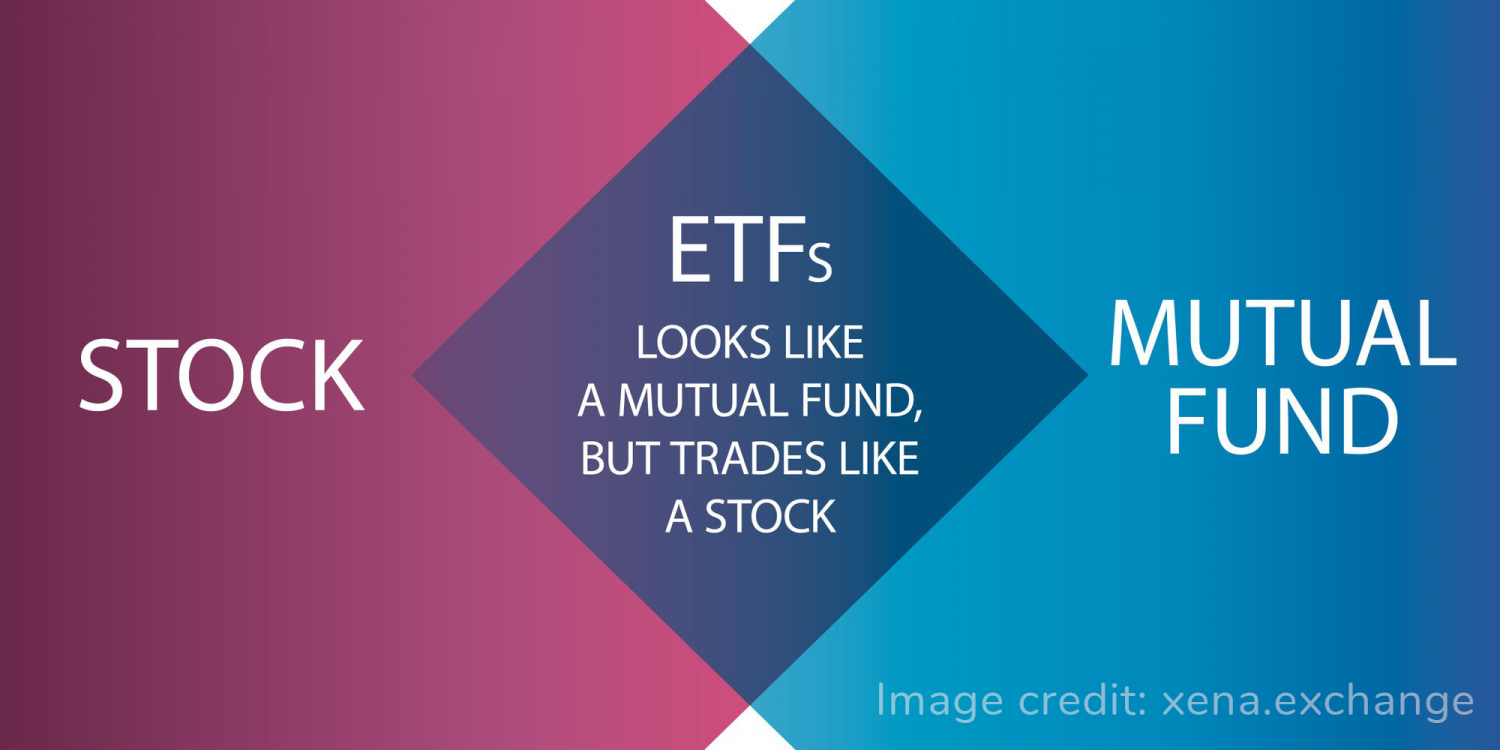Quiz
What are ETFs and how to trade them
What are ETFs and how to trade them
IG.com.ukWhat is an exchange traded fund (ETF)?
An ETF – meaning exchange traded fund – is an investment instrument that tracks the performance of an existing market or group of markets. The fund will either physically buy a basket of the assets they are tracking or use more complicated investments to mimic the movement of the underlying market.
ETFs are bought and sold on a stock exchange – in much the same way as stocks are traded. However, they do not grant the investor shareholder rights in the same way as traditional investing. For example, stock ETFs can pay dividends, but do not grant the holder voting rights. If you want to be an active shareholder, you should consider share dealing instead. Likewise, investing in a commodity-based ETF would not grant you physical ownership of the underlying asset.

Types of ETFs
There are a range of ETFs available for traders and investors, depending on their goals, market preferences and risk appetite. We’ve gone through the main categories of ETFs below.
Stock index ETFs
Stock index ETFs are funds that track the performance of a given index. As stock indices are nothing more than a number representing a group of shares, traders and investors have to find ways to trade on their price. ETFs can enable you to gain such exposure from a single position, as they can track multiple stocks.
For example, a FTSE 100 ETF would track the performance of the FTSE 100, and would either hold physical shares of the index’s constituents, or products that mimic its price movements.
Currency ETFs
Currency ETFs enable investors and traders to gain exposure to the forex market, without having to buy or sell the underlying currencies. In some cases, these ETFs will only track a single currency, but for the most part they track baskets of currencies.
Currency ETFs can be used to gain exposure to the economic health of regions – such as the EU – or emerging market economies. They can also be used as hedge against inflation and foreign asset risk.
Sector and industry ETFs
A sector or industry ETF will track an index made up of companies operating within the same industry. Most industries will have an index that comprises of major stocks. For example, the gold sector has the S&P 500 Global Gold Index, which is comprised of securities from the sector including miners, researchers and producers.
Like currency ETFs, sector ETFs can be used to take advantage of changes in an economy’s health and as a hedge against any existing positions. If an investor or trader has significant risk in a particular sector, they can mitigate this risk by shorting a sector ETF.
Commodity ETFs
Commodity ETFs are not comprised of the underlying commodity, but rather derivative contracts that take their price from the commodity. This enables investors and traders to speculate on the price of commodities without worrying about the physical delivery or storage of the assets.
It’s important to note that there is a difference between commodity ETFs and commodity- linked ETFs, such as the sector ETFs described above. Commodity ETFs emulate the price of the underlying commodity, whereas commodity-linked assets track companies within the industry.
Inverse or short ETFs
Inverse ETFs are funds that move in the opposite direction to the underlying asset. So any movement that the asset makes, the inverse ETF does the opposite. They can be found on any of the above categories of ETF.
Investors and traders tend to use inverse ETFs as a means of opening short positions on the market. They can be useful hedges for existing long positions, or just a way of speculating on falling markets.
Leveraged ETFsLeveraged ETFs are designed to mirror an underlying asset but use financial derivatives to amplify investors’ exposure. For example, a leveraged 2x ETF would maintain a $2 exposure to the underlying asset for every $1 of investor capital.
When using a leveraged instrument, losses can also be magnified. This is why it’s important to thoroughly research these ETFs and create a risk management strategy before a position is opened on them.

How to take a position on ETFs
Buying an ETF
ETFs are popular among investors as they can offer a broad market exposure from just a single position.
When you start to invest, you’ll need to decide what proportion of your capital you want to invest in each different asset class or region, and then choose whether you want to take a passive approach or use an actively managed fund. Research has shown that it is difficult to find a fund manager who consistently beats the market after fees,1 which is why ETFs have become a common way of accessing a higher rate of return.
ETFs are low cost and share the best qualities of both closed and open-ended funds.
Trading an ETF
Trading ETFs is a great way to capitalise on shorter-term price movements within certain sectors. When you trade ETFs with CFDs or spread bets, you can take advantage of leverage to get amplified exposure to the ETF of your choice.
As a result, both CFDs and spread bets enable you to open a position for just a fraction of the cost of traditional investing. While leverage can magnify your profits, it can also magnify your losses, so it is important to create a risk management strategy before you trade.
 Go To Source
Go To Source
DISCLAIMER
For information purposes only; not intended as financial advice